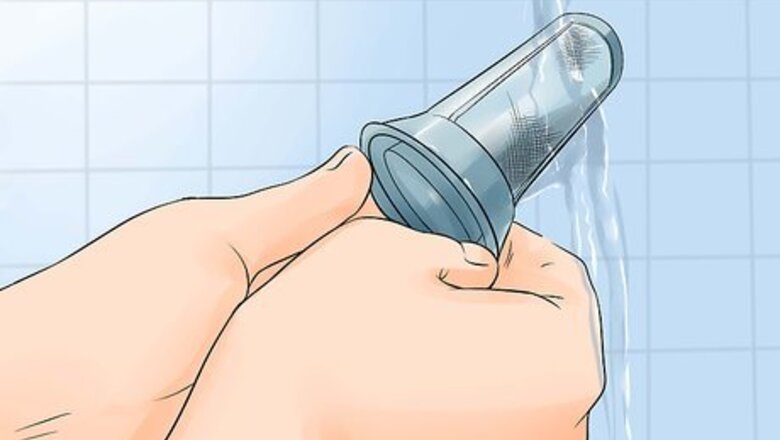
views
Scrubbing Your Dishwasher

Clean the drain filter. No part of your dishwasher is more likely to responsible for strange odors than the drain filter. Food particles can collect here, and over time in a warm, moist environment they can become disgusting. There will probably be a cylindrical, detachable filter through which all of the water drains. In order to access the filter, remove the bottom rack, then twist out the filter. Wash the filter with soap and hot water in your sink. It may be difficult to reach all of the interior sections of it with a rag, so you may want to use a bottle brush.
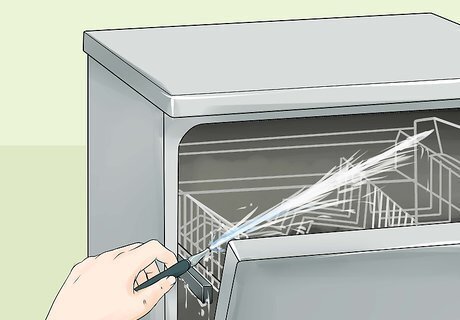
Wash the inside of the door and the interior walls. Smells may also come from grime that has accumulated throughout the inside of the dishwasher. You must scrub out the entire unit. Remove all racks from the inside of the dishwasher. These will only get in your way when washing the interior of the dishwasher. Use a rag or brush and hot soapy water to scrub out the interior of the dishwasher. If grime has accumulated and is not easy to remove, consider also using some kitchen-safe household cleaners to help you scrub it out.
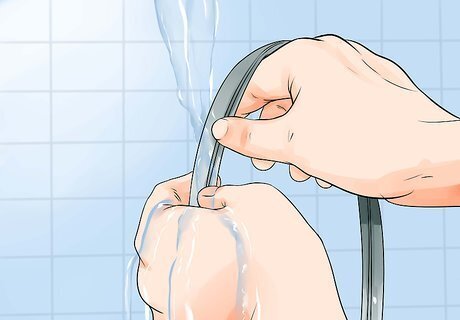
Wash the door gasket. The seals of the dishwasher door can also accumulate moisture and grime and must be washed.

Scrub the dishwasher racks in your sink. Though they are the unlikeliest cause of smell, you should make sure to rule out all of the simplest possibilities before you invest too much time and energy in the problem.
Removing Smell with Vinegar and Baking Soda
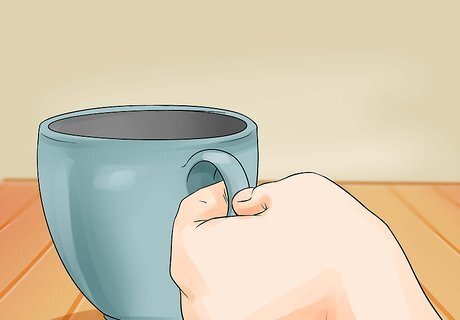
Place 1 cup (240 mL) of distilled white vinegar in the top rack of the dishwasher. Despite its own smell, the acid in vinegar is one of the most potent smell-removing agents. Additionally, as it dries the smell of vinegar dissipates quickly. Make sure the dishwasher is empty when you attempt to clean it in this way. If you don't like the smell of vinegar, add a few drops of an essential oil to the vinegar.
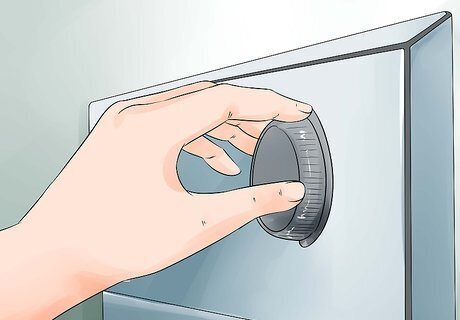
Run the dishwasher for a full cycle. The vinegar will be blasted all over the interior of the dishwasher, and that is precisely the intention. The acids in the vinegar will help break down any residues that remain in the interior of your dishwasher.
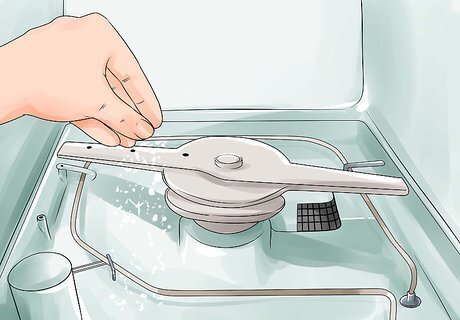
Sprinkle a cup of baking soda over the bottom of the dishwasher. Baking soda is another well-known odor neutralizer, and following the vinegar shower with a rinse of baking soda has become a popular (and organically approved) solution to cleaning and smell-removal problems.
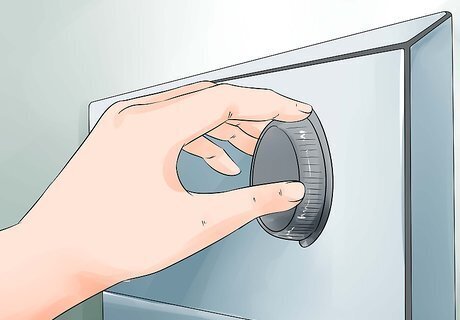
Run an additional cycle. This time the dishwasher should be run one of the shortest cycles available, and in order to dissolve all of the baking soda the water should be the hottest it can be. After this, the dishwasher should be clean and fresh smelling.
Troubleshooting the Problem

Check the troubleshooting section of your dishwasher's manual. Most dishwashers will come with manuals that include troubleshooting sections that include specific cleaning instructions in just this kind of situation. Many dishwasher manuals are also available online for free. Websites such as ManualsOnline.com and ManualsLib.com are just a few of the many sites that have downloadable manuals for a variety of home appliances.
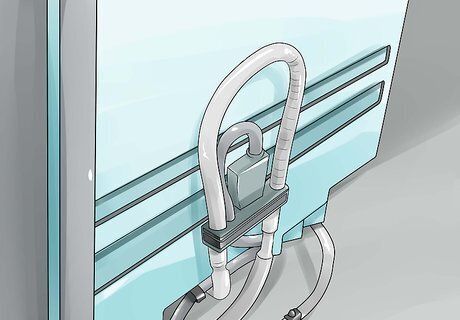
Check the drain hose for obstructions. Especially check into this if there is water in the bottom of your dishwasher at the end of a cycle. If the drain hose has become bent or restricted, the flow of water can be limited and built-up water can become musty in the hose. If the dishwasher can be pulled away from the wall, do so to check the hose. Most other dishwashers will be located next to the kitchen sink will have drain hoses that connect to the same kitchen drain pipe. You can detach the hose at whichever end is easier to access in order to inspect it.

Make sure the dishwasher drain hose is installed at the correct point. Waste water from the sink can drain through the hose into the dishwasher if the drain hose is not looped up from the drain pipe before it is run to the dishwasher. The weight of a sink-full of water can push water back up through the dishwasher drain hose. If this appears to be a problem, raise the loop of the drain hose higher.
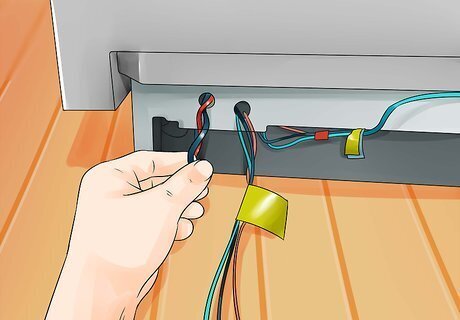
Check the electrical connection. Examine the junction box behind the kick plate under the door of the dishwasher. A poor connection can produce an odor and is a fire hazard. Other problems can come from shorts in any of the electrical lines or a dysfunctional heater unit. If the dishwasher appears to have electrical problem, unplug it and call an electrician to fix the problem.




















Comments
0 comment